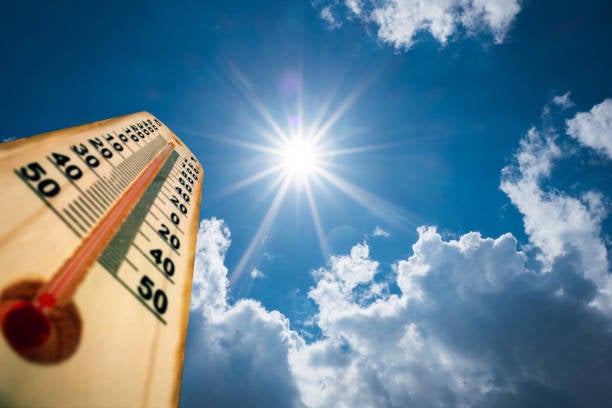Be mindful of the dangers of summer heat
Published 2:33 pm Tuesday, July 13, 2021

- High Summer temperatures
|
Getting your Trinity Audio player ready...
|
Last week, Elizabethton and the Northeast Tennessee area saw temperatures in the upper 80s and 90s, which is nothing compared to the plus 100-degree temperatures the Northwest and Southwest are experiencing. Temperatures are also hitting high marks again this week.
It doesn’t take long for the heat to turn deadly, especially if you are working outside on these warm days. We encourage you to take the proper precautions to keep you, your children, and your pets safe.
After being relegated to working from or pursuing education virtually for over a year because of COVID-19-related restrictions, many Americans have already started to spread their wings and get outside as much as possible.
But as you leave home to gather with friends at your favorite restaurant or to take a walk or bicycle ride on the Tweetsie Trail or another trail nearby, beware of the heat especially in the mid to late afternoon.
Heatstroke counts as a potentially life-threatening condition that develops when the body overheats, usually after prolonged exposure to the sun. This condition can affect people of any age but it’s most often seen in young children, athletes who train outdoors, during hot weather, and people over the age of 50. When combined with dehydration, another common symptom in extreme heat, heatstroke can damage the brain and internal organs and may even be fatal. Heatstroke is a medical emergency and 911 or any other emergency services should be called as soon as someone suspects this condition.
When your body gets too hot, you may experience a heat-related illness such as heat exhaustion or heat stroke. Such illnesses can be dangerous. In fact, on average, there are more heat-related deaths in the U.S. each year than hurricane — or flood-related fatalities combined.
Also, be mindful about leaving small children, older persons, and pets alone in unattended cars while you run into the grocery store or go to pay a bill. It is especially dangerous for people in these age groups to be left in a hot car. That seems like common sense, but sadly it happens all too often with deadly consequences.
The temperature inside a car rises almost 20 degrees in 10 minutes, according to the National Highway Traffic Safety Administration. When temperatures outside are in the 80s, the inside of a car can reach close to 125 within 60 minutes, according to National Oceanic and Atmospheric Administration. Heatstroke begins when the core body temperature reaches 104 degrees.
According to the CDC, signs of heatstroke include:
• Body temperature of 104 degrees Fahrenheit or more (40 degrees Celsius)
• Fainting
• Confusion
• Fast and strong pulse
• Dizziness
• Skin that is hot to the touch. The skin may also be red, dry, or damp.
• Upset stomach, nausea, or vomiting
Call 911 immediately if someone is showing heatstroke symptoms as it is a medical emergency. While you wait for help, the CDC recommends that you provide first-aid treatment: move the person to a cooler place out of the sun; and cool the person by applying cold, wet cloths or by placing the person in a cool-water bath.
Other preventive steps include drinking plenty of water, avoiding caffeine. Wear light-colored, loose-fitting clothing, refraining from exercising outdoors during the hottest times of the day, taking breaks to cool down under the shade if you’re playing, exercising, or working outdoors, and seeking shelter during heat waves.
Be cool. Stay cool. It doesn’t take a lot of time or effort to prevent a tragedy.

